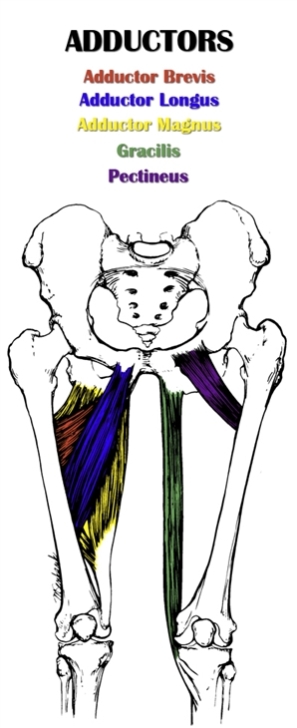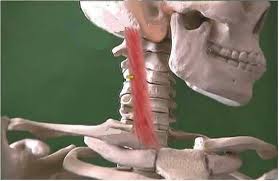Our Quirk of the Month is groin strain. Recently, we’ve had many clients come in with varying degrees of adductor strains, more commonly known as groin pulls. We will show you what a groin pull is, how to avoid them if possible and what can be done to put you on the mend.
What is a Groin Pull?
A groin pull ranges from slight stretching, to a complete rupture of the muscles that attach the pubic (pelvis) bone to the femur (thigh) bone. This pull or strain, specifically affects the three muscles (called the Adductor muscles) located on the inside of the thigh, the function of which is to help bring the legs together (adduction) and to help stabilize the hip joint. Of these three, it is Adductor Longus (in blue) that is most susceptible to injury. The most common point of injury on Adductor Longus is wherethe muscle and tendon attach to the thigh bone.
Of these three, it is Adductor Longus (in blue) that is most susceptible to injury. The most common point of injury on Adductor Longus is wherethe muscle and tendon attach to the thigh bone.
What Causes a Groin Pull?
Sports that require a lot of running or a quick change in direction are the most susceptible to groin injuries. Other activities like kicking and jumping, as well as rapid starts and stops, also place a lot of strain on the groin muscles. Any sudden pressure to the area, such as that caused by a fall or a soccer ball hit, can also be the cause.
Though some exercises, like the lunges and wide stances seen in the video above, work to keep the abductors strong and flexible — remember not to overdo them, as additional strain could lead to a pull as well.
Symptoms of a Groin Strain or Pull
- Swelling
- Pain
- Loss of strength in the groin area
How to Treat Groin Strain
Working the affected and surrounding areas with deep massage is a good and effective way to heal your pull quickly. We would, of course, put our trusty “Scrapey” to work, making sure to release any built-up adhesions that could cause future issues.
Experiencing a groin pull or strain? Make an appointment today and let us help you heal your pull and get you back on track.





